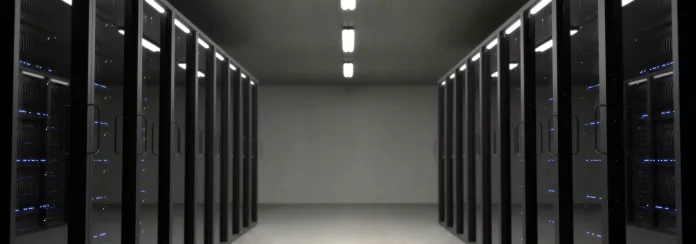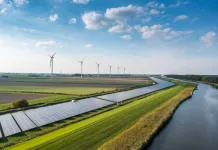Recognizing the critical need for more energy-efficient systems within the world of digital infrastructures, the National Renewable Energy Laboratory (NREL) has significantly invested in a pioneering initiative, driven by the U.S. Department of Energy‘s Advanced Research Projects Agency-Energy (ARPA-E). This initiative, furnished with a robust $40 million budget, is set to revitalize the way data center components are cooled.
Among numerous projects under the ARPA-E umbrella, NREL is spearheading a significant research endeavor and offering its expertise to three others within the ambitiously titled program known as COOLERCHIPS (Cooling Operations Optimized for Leaps in Energy, Reliability, and Carbon Hyperefficiency for Information Processing Systems). The objective is clear: to diminish the excessive energy expenditure of data centers, thereby reducing their carbon footprint and aligning with the nation’s clean energy targets to achieve net-zero carbon emissions by the midway point of this century.
The Criticality of Cooling Efficiency within Data Centers
Operating at the heart of our digital ecosystem, data centers are the engines behind the servers, storage units, and extensive computing networks that many of us rely on daily. Shockingly, data centers in the United States alone are responsible for nearly 2% of the country’s total electricity usage. If one were to visualize this, it’s akin to lighting up the entire city of Montgomery, Alabama—with energy demands mirroring the needs of 80,000 homes. Moreover, a staggering 40% of a data center’s energy consumption is attributed to its cooling mechanisms. Therefore, the push for more efficient cooling methodologies is not just necessary; it’s imperative.
Take, for instance, NREL’s South Table Mountain Campus located in Golden, Colorado. Here, a state-of-the-art warm-water liquid-cooling system manages to recapture a remarkable 97% of the waste heat generated by the campus’s supercomputer, Eagle. The recaptured heat doesn’t go to waste—it fortifies the main thermal system for the Energy Systems Integration Facility that the data center calls home. This clever system not only heats the office and lab spaces but also doubles as a de-icing solution for the building’s external sidewalks during winter. This ingenious cooling technique allows Eagle to run on slightly less than 2 MW of electrical power—a testament to efficient design.
Establishing New Benchmarks in Cooling Technology Evaluation
NREL, with robust backing, is in pole position to redefine the standards through which cooling technologies are measured. David Sickinger, alongside his colleagues at NREL, the Georgia Institute of Technology, and Sandia National Laboratories, is helming a project with a budget that exceeds $1.5 million courtesy of ARPA-E. Their mission? To construct a universally accepted set of testing protocols to scrutinize the performance of COOLERCHIPS technologies under genuine data center conditions. The scope ranges from individual components to entire racks, extending all the way to full-edge data centers. By establishing these standardized metrics, all COOLERCHIPS project partners can benefit. Plans are afoot at NREL and Georgia Tech to pilot some of the novel systems birthed from COOLERCHIPS research, serving as a proving ground for these cutting-edge cooling solutions.
Awards and Collaboration: NREL’s Role Expands
Under the leadership of Sreekant Narumanchi, an esteemed figure in the advanced power electronics and electric machines domain, NREL’s team is set to make substantial contributions to various partner projects within the COOLERCHIPS program. These collaborations span across different institutions and feature innovations that hold promise to transform data center cooling as we know it. For instance, the University of Missouri has received $1.6 million to develop a hybrid cooling solution with potential advantages in power density, reliability, and scalability. NREL’s own senior research engineer, Douglas DeVoto, is pivotal in this partnership.
Moreover, the University of Maryland‘s endeavor, buoyed by a $3.5 million grant, aims to create an integrated decision support tool, a game-changer in data center design that balances reliability, energy efficiency, carbon footprint, and cost. NREL research engineer Jiazhen Ling is playing a leading role in supporting this ambitious project. Further south, the University of Florida’s plans, funded at $3 million, stand to revolutionize thermal management with a groundbreaking solution capable of handling unprecedented levels of heat flux and power inherent to server racks of the future. Gilbert Moreno, NREL’s senior research engineer, is spearheading the project’s involvement.
In the collective stride towards reducing our digital carbon footprint, these initiatives represent just the vanguard of a much larger, dynamic effort to render our data-driven lives compatible with the health of our planet. Through strategic collaborations, innovative research, and a relentless pursuit of greener technologies, NREL and its partners within the COOLERCHIPS program are leading the charge in creating the sustainable data centers of tomorrow.

























